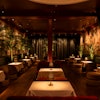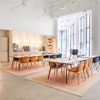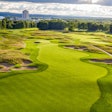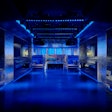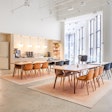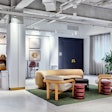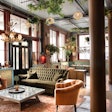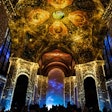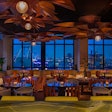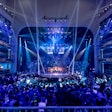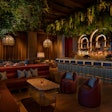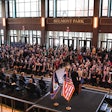With the inaugural New York Fashion Week: Men’s but a fleeting memory, it’s too early to gauge the success the event achieved, or if it met its intended purpose as set out by the Council of Fashion Designers of America: generate sales and build that all-important buzz—all the while simplifying the New York Fashion Week calendar that has seemingly spiraled out of control. It was back in 1995 that 7th on Sixth—the nonprofit that had created and executed an organized women’s fashion week at Bryant Park—put together a men’s consortium in an effort to replicate the success it met with its female counterparts. While that effort was met with a short fuse of success, things appear to be on the mend some 20 years later.
From relative newbies Siki Im, Greg Lauren, and John Elliott & Company to buzzy names like Alexandre Plokhov, Stuart Vevers for Coach, Duckie Brown, and Gypsy Sport to firmly established nameplates John Varvatos, Thom Browne, Ralph Lauren, Tommy Hilfiger, and Michael Kors, there appeared to be enough variety—and ad dollars—for editors, and their retail counterparts, to show up.
“I thought the men's shows were very well organized and I was glad to see the C.F.D.A. brought back the separate men’s week again,” said industry veteran Fern Mallis, a former executive director of the C.F.D.A. best known as the creator of 7th on Sixth (aka New York Fashion Week). “There were many terrific shows and presentations, and it’s clear that there’s enough talent to sustain a separate fashion week.”
The general consensus from the bold-faced attendees was that the week, which ran July 13 to 16, was run smoothly with little intrusion from attention-seeking crashers or in-your-face corporate giants hawking their latest consumer goods. Designers, in return, put their A-game on with shows and presentations that served as a complement to what was an otherwise overwhelmingly conservative showing of collections.
From Public School’s prison lineup vignettes and Plokhov’s Euro-centric all-black venue bathed in blood red light to Ralph Lauren turning his lobby into a dessert bar for editors and Browne’s whimsical presentation on tailoring, the results left many blocking out their datebooks for round two, to be held January 28 to 31.
As for Fashion Week’s new home, “I liked the way Skylight Clarkson Square was laid out,” said Mallis, now the host of "Fashion Icons With Fern Mallis" at New York’s 92nd Street Y. “[It reflects] the men's industry, which has a very cool laid-back vibe.”
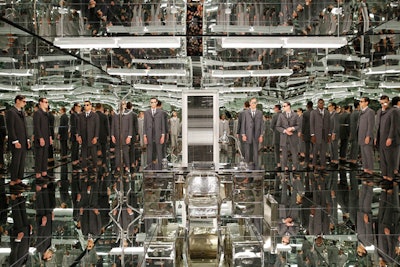
Thom Browne, on the heels of his Paris Fashion Week men's show, delivered an entirely new collection for New York Fashion Week: Men's entitled "The Officeman" that celebrated his retro-'50s shrunken tailored silhouette and American men's tailoring. Held July 14 at Skylight Modern and produced by Nian Fish and Eyesight, the event had guests enter the venue's basement and wait in line to enter a specially constructed white box—inside of which stood 28 models in perfect unison against fully mirrored walls. The installation referenced his past show at Pitti Uomo, which featured a room full of typewriters and desks—but in the New York version there was a single desk and typewriter dipped in silver.
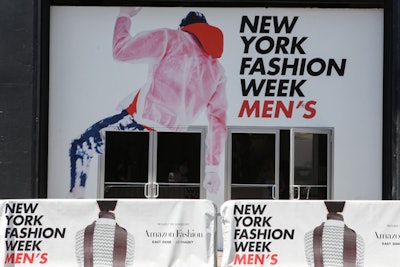
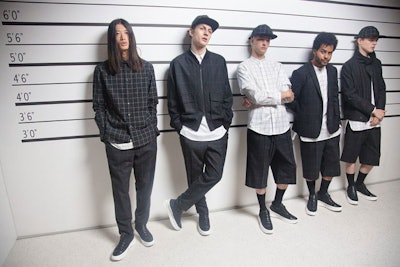
Having transformed Platform 2 at Skylight Clarkson Square into a dark and cavernous venue, Public School co-founders Dao-Yi Chow and Maxwell Osbourne presented their stylish streetwear using a setup of five vignettes, each designed to resemble police lineup boxes. Filled with a multiethnic mix of models and New York influencers like Nick Wooster, Waris Ahluwalia, and Twin Shadow (who also contributed the presentation soundtrack), the presentation, produced by One Kick, seemed to be as much a straightforward display of the duo's crisp tailoring and athletic-inspired gear as it was a social message reflective of nationwide police scrutiny.

John Varvatos moved his men's show from Milan to New York to close New York Fashion Week: Men's and celebrated the occasion with a July 16 show that put the emphasis on the pinstripe. Produced by Jay Arcos for Moda Tech in Platform 1 at Skylight Clarkson Square, guests were met by 350 umbrellas hung upside down and a custom-made runway with striped fabric covering a one-inch MDF floor.
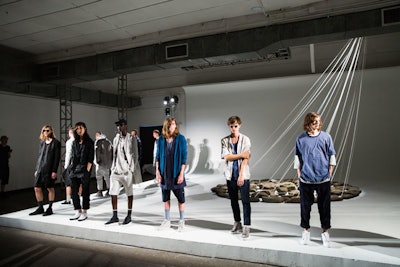
The intimate 16-look presentation at Industria Superstudio took place on July 13 during New York Men’s Day. The Los Angeles-based CWST designers and co-founders, Joe Sadler and Derek Buse, trucked in 105 large sun-dried stones via U-Haul to evoke the desert landscape of Death Valley that had inspired the collection. To complement the backdrop, 600 feet of white rope was strung from the rocks to the ceiling and lit by Aion Entertainment for effect. The large rocks were subsequently returned to their upstate New York locale following the presentation.
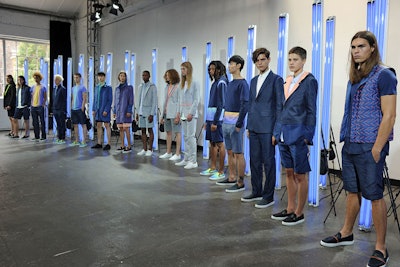
The Garciavelez presentation was also held on July 13 at Industria Superstudio during New York Men's Day. The company's founder and designer, Carlos Garciavelez, employed 30 periwinkle-blue light structures (60 fluorescent bulbs in total) as the backdrop in front of which stood his models. The show was produced by the designer, himself an architect by training, with Dan Flavin and Donald Judd serving as the inspirations for both the set and the collection.

With a threat of thunderstorms that never materialized, the Theory presentation on July 15 proceeded as planned—on the rooftop of the brand’s striking meatpacking district headquarters. Menswear head Ben Stubbington staged his models on an array of scaffolding against the striking backdrop of lower Manhattan, showcasing men's and women's looks in a decidedly androgynous show.
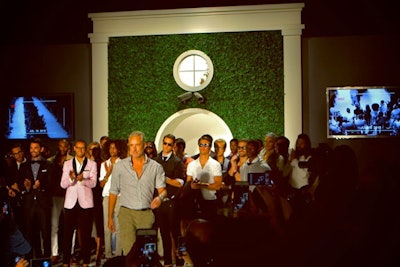
Always one of the menswear world's hottest tickets, the Michael Bastian show was held July 15 at Platform 1 in Skylight Clarkson Square. The runway presentation sought inspiration from the tony and privileged Los Angeles enclave of Bel-Air with a set that riffed with a cheeky Big Brother-like set built by Sets Machine and designed by Mark Chandler. It included a manse-like façade complete with columns, ivy topiaries, and even a chandelier, not to mention signs that read, "This property is protected by video surveillance." The U-shaped runway was uplit at the columns to evoke a "manicured home" effect, while lighting created a "pool party by moonlight" aesthetic as guests arrived. Longtime collaborator Stefan Campbell was the show’s executive producer and creative director and worked in collaboration with Berdella Inc.
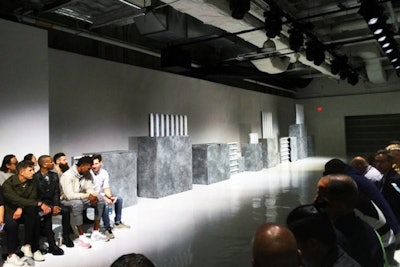
With a set inspired by an 11-mile trek through Vietnam the designer recently completed, John Elliott's July 15 show at Skylight Clarkson Square featured a series of nine cement structures meant to represent the cement buildings he came upon during his journey. Produced by MHT Productions, the runway presentation saw an athletic-conceptual hybrid collection shine starkly against the backdrop of incandescent lights.
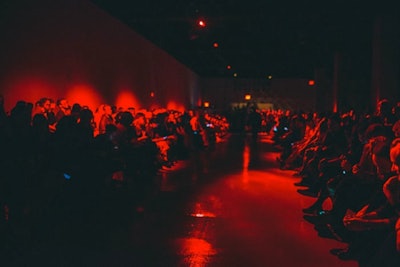
Produced by Jay Arcos for Moda Tech, Alexandre Plokhov's July 15 show at Platform 1 not only marked the designer's return to the runway after a hiatus of several seasons, but was also easily the week's darkest show (in terms of construction). The brooding runway, which set the tone for the cyber-gothic regalia that referenced military wear, was punctuated by spotlights of blood-red lighting that bathed the venue as guests arrived.
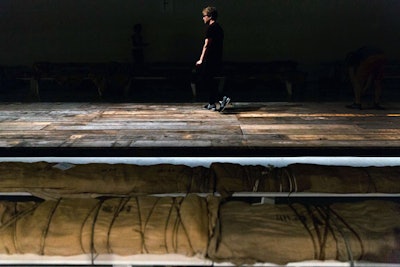
For Greg Lauren's July 15 show at Platform 1 inside Skylight Clarkson Square, the designer, for his first-ever menswear show, applied the hand-made aesthetic of his garments to his set as well. Forty-five custom burlap cushions, made in Lauren's Los Angeles studio, were fitted to the benches for the 300 seated guests. The 100- by 7-foot runway featured an elevated platform comprising uneven wood slats pieced together by Stewart Gerard.

Amazon served as the presenting sponsor for New York Fashion Week: Men’s and brought its fashion sites—Amazon Fashion, East Dane, and MyHabit—into the fold. In addition to a gallery-like space set up featuring the work of American photographer Erik Madigan Heck, the commerce company also branded elements such as the decorative mirrors that ran the entire length of the venue's central space walls.
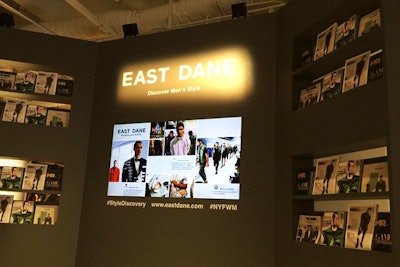
Serving a more practical—and downright convenient—purpose, the area for East Dane inside Skylight Clarkson Square became the information center and also included a live stream video screen. Guests could watch pretaped videos showcasing American men's fashion, watch a show live from the comfort of bench seating, or simply pick up one of a number of newspapers and magazines being handed out.
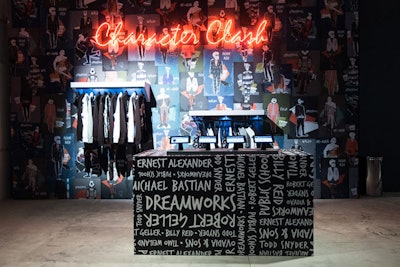
Fellow New York Fashion Week: Men’s sponsor DreamWorks Animation unveiled a limited-edition "Character Clash" collection showcasing five classic characters in designs by menswear designers ranging from Billy Reid to Ovadia & Sons to Todd Snyder. Launching simultaneously on Amazon Fashion, the product was displayed in a graffiti-esque space that was devoid of any corporate branding.
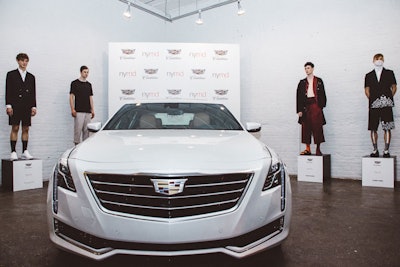
Cadillac returned as the presenting sponsor of New York Men's Day, which took place on the day before the official Tuesday start of New York Fashion Week: Men’s. The automaker teamed up with emerging designers, asking them to put their twist on one of the brand's models—all of which were displayed outside Industria Superstudio. Inside, on the second level, a Cadillac vehicle was flanked by one look each from either the morning or afternoon groups of presenting designers.
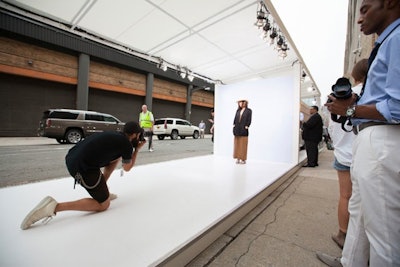
As part of as multi-season partnership with the C.F.D.A., Cadillac, whose global headquarters are also in nearby SoHo, erected a pop-up photo studio backed by the brand's all-new CT6 luxury flagship sedan and invited stylish tastemakers to have their photos taken by known street-style photographers. The images were then broadcasted on a digital wall the car company erected within the Skylight Clarkson Square venue.

Shinola, also a New York Fashion Week: Men’s sponsor, presented its Spring/Summer 2016 men's leather goods collection to editors in between shows at Skylight Clarkson Square. The conspicuous vignette featured brightly colored product housed under glass vitrines set in cozy wood displays, not to mention a new Regatta blue Runwell bike hung from the ceiling

Returning for the third season at New York Men’s Day, American shoemaker Johnston & Murphy showcased its Spring 2016 collection in a rather unconventional way. Rather than the traditional—and, perhaps, boring—shoe display, the brand, through its PR agency GCK Partners, perched 36 pairs of shoes atop waist-high platforms that ran the length of the Industria Superstudio driveway ramp. It not only made efficient use of otherwise dead space, but it also ensured that every guest saw the shoes and created a popular Instagram moment. On the walls behind the shoes, Cadillac erected poster boards of the 12 designers' concept sketches for their respective car exterior design.


